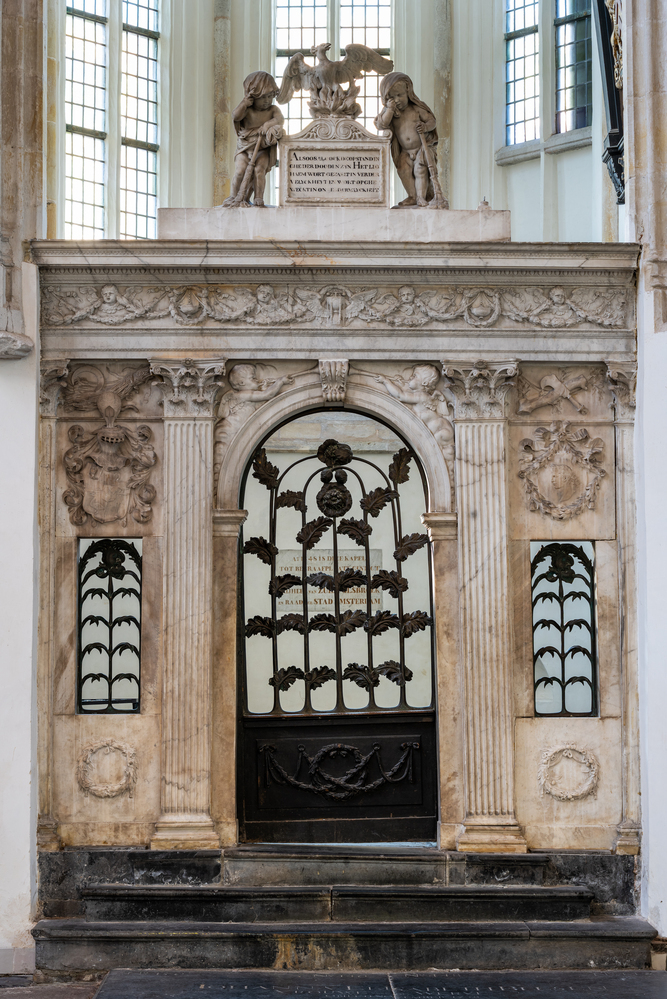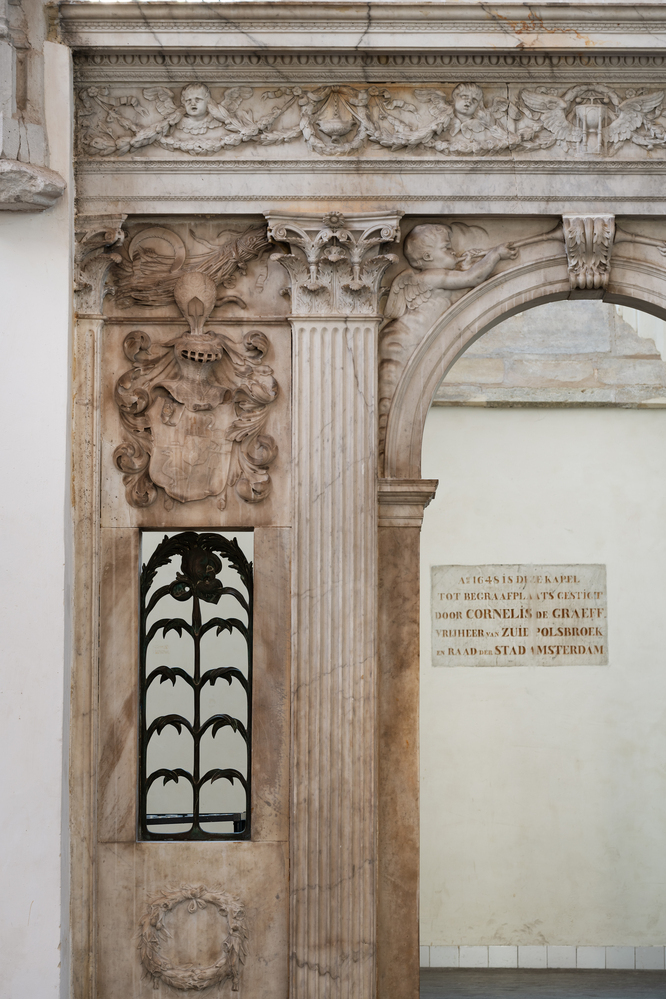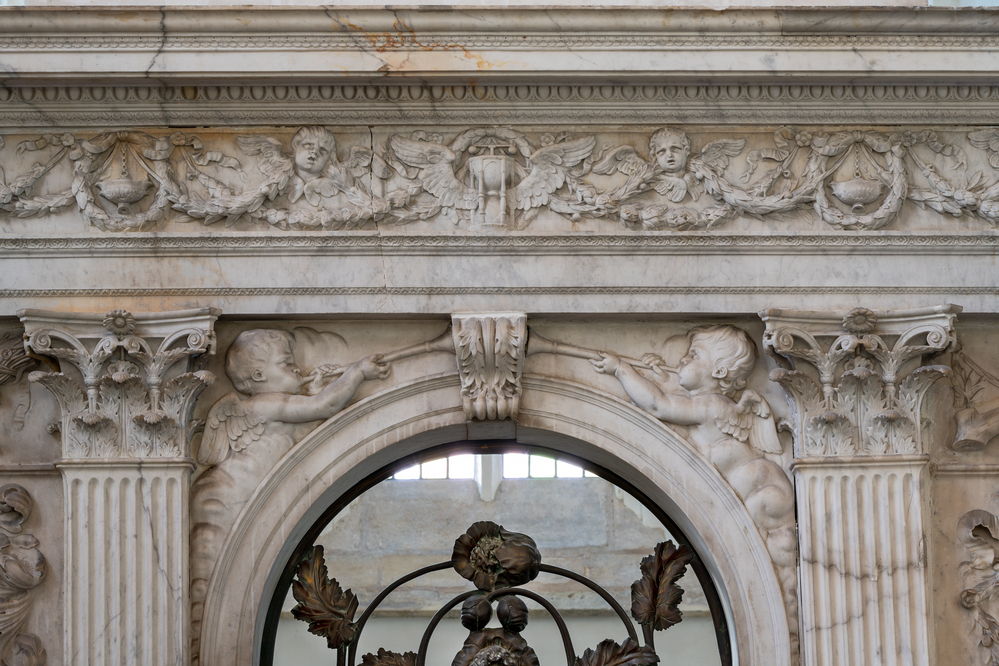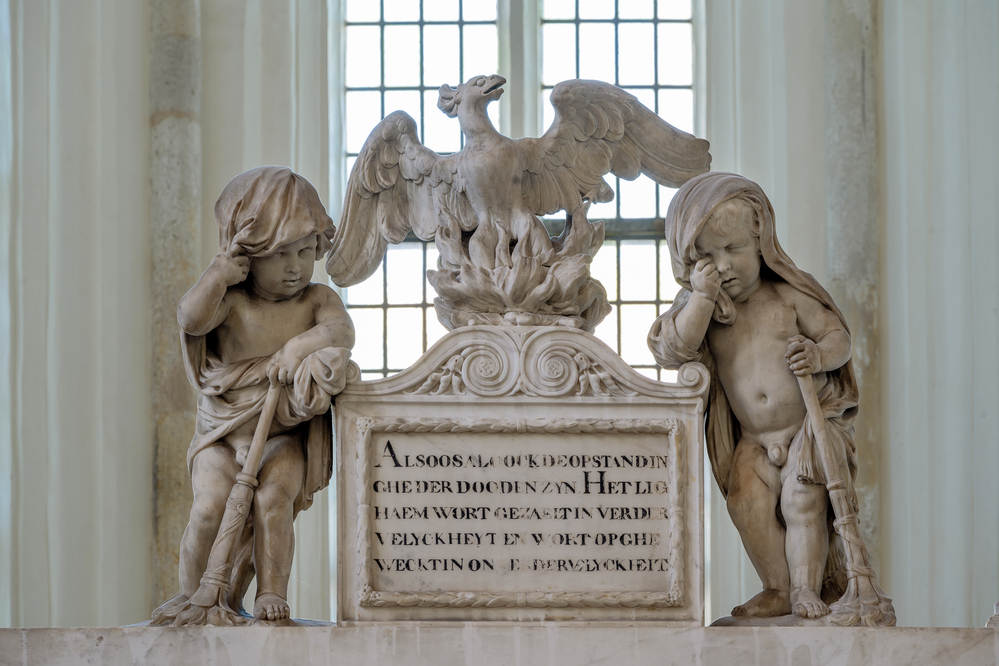Doopkapel
On the west side of the nave is the Oude Kerk's smallest chapel: the Doopkapel (Baptistery). It was built at the initiative of the church masters, but underwent a transformation in function and appearance when Cornelis de Graeff bought the chapel a century and a half after it was built.
---
## The Transformation of the Doopkapel
A baptistery, or baptisterium, has an important liturgical function in the Catholic Church: this is where the initiation into the faith takes place. The baptistery of the Oude Kerk was built in about 1504, the same period in which the other side chapels of the Oude Kerk were built. The other side chapels were founded by wealthy citizens, guilds and fraternities, but since the importance of the chapel for the liturgy, this chapel was paid for by the church.
The chapel underwent a major transformation in 1648, in function and in appearance. Cornelis de Graeff bought the space so that he and his family could later be buried here. For his future grave, he had a monumental entrance and a bronze door crafted. He commissioned this from architect Jacob van Campen and sculptor Artus Quellinus.
Explore the elements of the work
Read more
Read more
Read more
Part of
Read more
Related
Read more
Identifiers for references
| Oude kerk Adlib Collect priref | 2351 |




